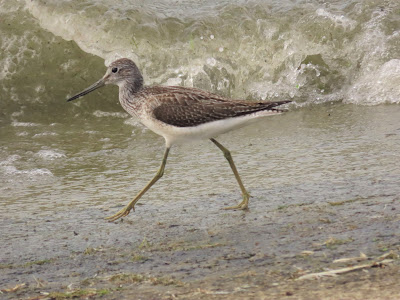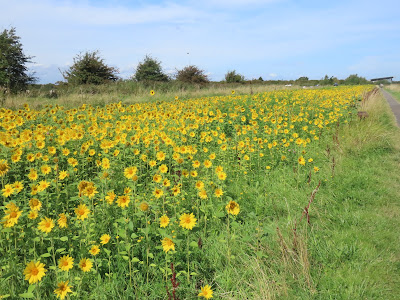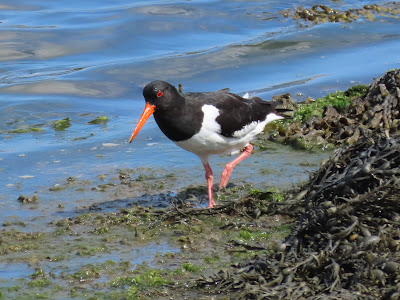Again, we enjoyed sunny weather, although initially breezy as we crossed the dam. Wagtails were in abundance, mostly pied, but a couple of grey wagtails amongst them feeding on the shore.
Despite the recent reports, no other waders appeared until we were crossing back to the car park. Scanning the water's edge, we suddenly noticed a movement further along. Using binoculars we recognised the long yellowish legs of a couple of greenshanks; we stayed put and waited as they made their way towards us giving quite the best views I have ever had in fact, before they suddenly took off and made towards the car park.
These weren't the only waders now on the dam, a turnstone and a dunlin also made an appearance. An afternoon visiting the nature reserve and hides, gave us sightings of a some common sandpipers as well as numerous coots and blackheaded gulls etc. and a heron and several little egrets before we ended our visit with ice creams as we sat relaxing on the grass overlooking the water.
dunlin
greenshank
greenshank
greenshank
turnstone




























































.JPG)
